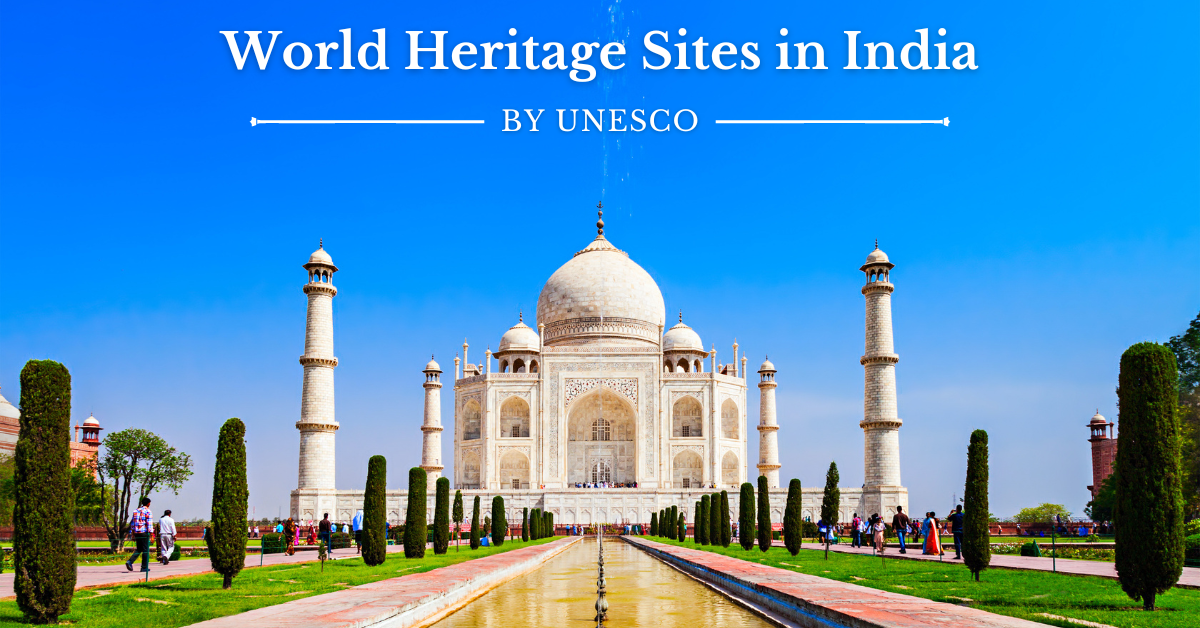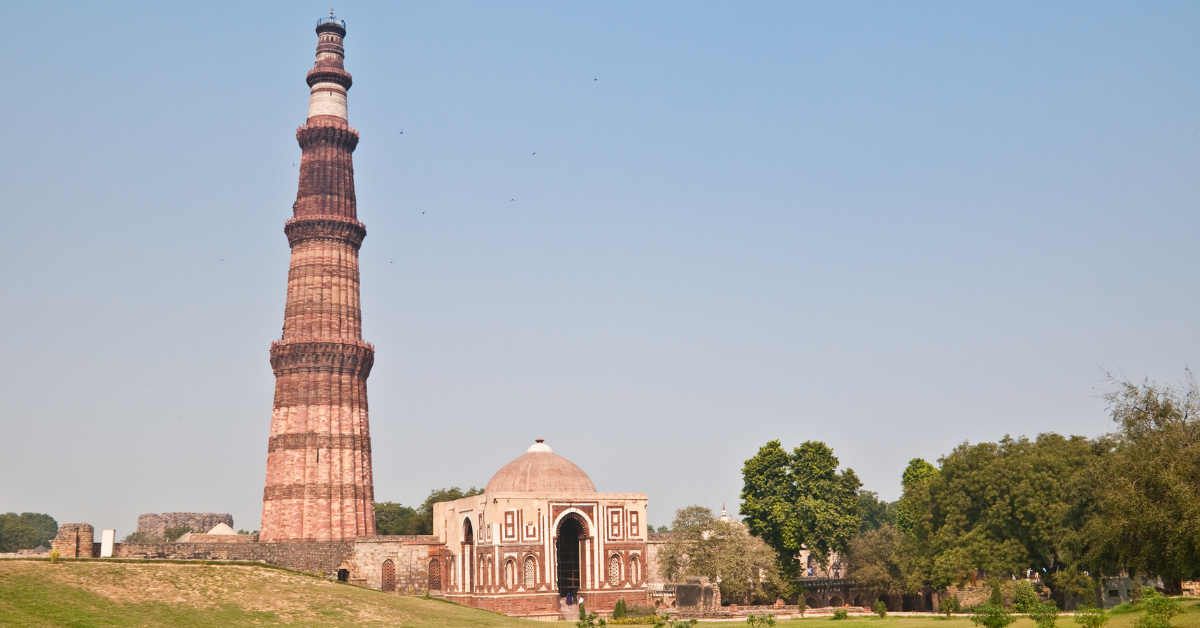Each site has a unique story to tell, offering a glimpse into India’s fascinating past. So, get ready to immerse yourself with these 7 UNESCO World Heritage Sites in India…
In this blog, we invite you to embark on a virtual journey through India’s heritage as we explore six must-visit UNESCO World Heritage Sites. Though there are more UNESCO sites in India, we have selected a few here so you can make a better choice instead of finding a needle in the pile of sand. So, grab a cup of tea, sit back, and get ready to immerse yourself in the wonders of Indian culture and history.
We begin our journey with the iconic Taj Mahal in Agra. Built by Emperor Shah Jahan as a symbol of love for his wife, Mumtaz Mahal, this ivory-white marble mausoleum is a masterpiece of Mughal architecture. As you step into the Taj Mahal complex, you’ll be captivated by its symmetrical gardens, reflecting pools, and intricate marble inlays. Marvel at the beauty of the main mausoleum, with its stunning domes and delicate carvings. The Taj Mahal is especially enchanting at sunrise or sunset when the changing light creates a magical ambiance. Standing from around 400 years, Taj Mahal has its place in seven wonders of the world and is definitely one of the most visited tourist destinations of India.
In the heart of Old Delhi stands the majestic Red Fort, a UNESCO World Heritage Site. Built by Emperor Shah Jahan again (looks like he was in construction business), the fort served as the residence of Mughal emperors for centuries. As you enter through its imposing red sandstone walls, you’ll find yourself transported back in time. Explore the sprawling complex, including the Diwan-i-Aam (Hall of Public Audience) and the Diwan-i-Khas (Hall of Private Audience). Marvel at the intricate marble work and enjoy the panoramic views of the city from its bastions. Don’t miss the sound and light show in the evenings, which brings the history of the fort to life. Again standing tall from years, Red Fort once even had its photo on currency notes. And that says enough for its value.
Nestled in the state of Karnataka, Hampi is a mesmerising UNESCO World Heritage Site that was once the capital of the Vijayanagara Empire. This open-air museum is a treasure trove of ancient ruins, and breathtaking landscapes. Take a stroll through the Royal Enclosure, which includes the Queen’s Bath, the Lotus Mahal, and the Elephant Stables. Hampi’s ethereal charm, set amidst boulder-strewn hills and lush greenery, is sure to leave you awe-inspired. Also, Karnataka gives a good glimpse of the South’s beautiful culture and you might meet people with beautiful hearts along the way.
In the vibrant city of Jaipur, the City Palace stands as a testament to Rajasthan’s regal heritage. This sprawling palace complex is a blend of Rajput and Mughal architectural styles and offers a glimpse into the lives of the royal families. Explore the Mubarak Mahal, which houses a museum displaying royal artifacts and costumes. Admire the intricate artwork of the Pritam Niwas Chowk and the Chandra Mahal, with its stunning peacock gate. Take in the panoramic views of the Pink City from the palace’s balconies. The City Palace is a captivating destination that allows you to immerse yourself in the opulence and grandeur of Rajasthan. Ghoomo-re!
Located on the shores of the Bay of Bengal, Mahabalipuram is a UNESCO World Heritage Site that boasts a remarkable collection of ancient rock-cut temples and sculptures. Explore the Shore Temple, a stunning example of Dravidian architecture, which stands as a testimony to the artistic skills of the Pallava dynasty. I don’t ask you to bow there or take part in rituals, I ask you to witness the architecture of that era. Marvel at the intricate bas-reliefs of Arjuna’s Penance, which depicts scenes from the Mahabharata. Admire the monolithic sculptures of the Pancha Rathas, which resemble chariots. Mahabalipuram’s unique coastal setting and its collection of awe-inspiring structures make it a must-visit destination for history and art enthusiasts.
Our journey concludes with the Qutub Minar, an iconic UNESCO World Heritage Site in Delhi. This towering minaret is a masterpiece of Indo-Islamic architecture and stands as the tallest brick minaret in the world. As you explore the Qutub Minar complex, marvel at the intricately carved sandstone panels and the exquisite craftsmanship of the nearby Alai Darwaza. Admire the Iron Pillar, known for its corrosion resistance despite being over a thousand years old. The Qutub Minar complex is not only a historical marvel but also a peaceful oasis amidst the bustling city. I would recommend sitting near Qutub Minar in the evening and just looking around – the people, the starry sky, the Minar itself – it’s a beautiful experience.






